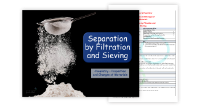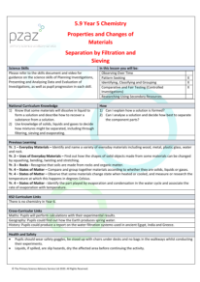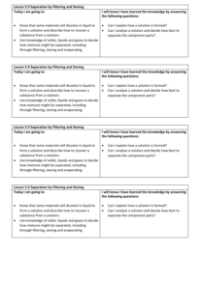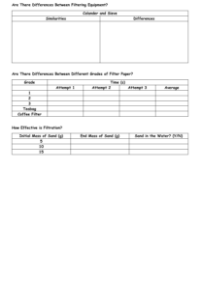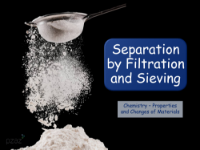Separation by Filtration and Sieving - Teacher Explanation

Science Resource Description
Welcome to Lesson 5.9 on Separation by Filtration and Sieving, part of the Year 5 curriculum on Properties and Changes of Materials. This lesson is designed to help pupils understand the process of separating mixtures through filtration and sieving, in line with the National Curriculum's requirements. Pupils will learn how to recover substances from solutions and explore the separation of solids, liquids, and gases. For safety, it's paramount that pupils wear protective goggles, stand up during practical activities, keep chairs on desks, tie back long hair, and ensure walkways are clear of bags. Spilled liquids must be promptly cleaned to prevent slips. The lesson also incorporates cross-curricular links, including calculations for maths, an understanding of natural water filtration in geography, and historical research on water filtration methods used in ancient civilisations.
The lesson begins with a practical demonstration using a colander, sieves, rice, marbles, water, and a bowl to show how sieving separates the components of a mixture. Pupils are encouraged to think about the physical properties of materials and how they influence the separation process. They will also compare different filter papers and investigate their efficiency in filtering water. This exercise involves setting up an experiment with filter funnels, measuring cylinders, a stopwatch, and various types of filter paper. Pupils will observe the rate at which water passes through the filters and draw conclusions about the pore sizes. Another activity focuses on the effectiveness of filtration in separating a liquid from an insoluble solid, using sand as an example. Pupils will measure, filter, and dry sand to assess the efficiency of the filtration process. The lesson aims to provide a comprehensive understanding of separation techniques, reinforcing the idea that the physical characteristics of mixture components dictate the most suitable separation method.
